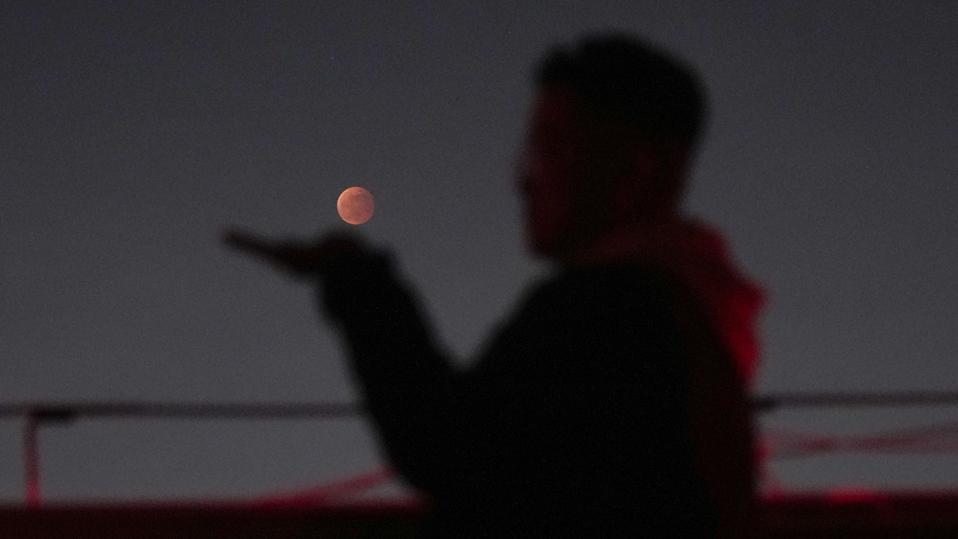


North America is about to be in prime position for the first total lunar eclipse since November 2022. Also called a “blood moon” because of the reddish hue the moon takes on during totality, the total lunar eclipse on March 13-14, 2025, is North America’s only total lunar eclipse of the year.
KUNMING, CHINA - NOVEMBER 08: A man poses for a photo with the moon during a total lunar eclipse on ... [+]
The total lunar eclipse on March 13-14, 2025, will be visible across North and South America, with prime viewing conditions in the U.S., Canada and Mexico, as well as in South America. The entire eclipse will last 366 minutes, but totality — the most dramatic phase, during which the moon will turn red — will last approximately 65 minutes.
Light pollution will restrict views of stars — and the Milky Way — that will become visible around the full moon during totality. Although traveling far from city lights to dark rural skies, such as national parks, is a good idea, it’s not neccessary to see the “blood moon” itself, which will look the same in a big city as in a rural area.
Clear skies are more important than dark skies for views of the totally eclipsed moon, so check weather forecasts in advance and head somewhere with less cloud cover. However, since totality will last 65 minutes, a short break in the clouds is all that’s required for a successful observation.
If you want to see close-ups of the “blood moon,” visiting an observatory — or getting your hands on any kind of binoculars or a telescope — is recommended. A great place to start is your local observatory, with local astronomy clubs also often hosting eclipse-watching events.
Although there are several phases of this total lunar eclipse that unfold over around five hours, the critical phase is totality, during which the lunar surface will be a reddish color. Here are the timings for time zones across North America.
Eastern Daylight Time (EDT). The Moon moves right to left, passing through the penumbra and umbra, ... [+]
A total lunar eclipse occurs when Earth moves directly between the sun and the moon, casting a shadow that gradually engulfs the lunar surface. During totality — which will last for 65 minutes on March 13-14 — sunlight passing through Earth’s atmosphere is refracted, allowing long-wavelength reddish light to most easily pass through to illuminate the moon.
A total lunar eclipse has five distinct phases. It begins with the penumbral phase, where Earth's outer shadow lightly dims the moon. The partial phase follows this, as the moon enters Earth’s darker central umbral shadow. Totality occurs when the moon is fully submerged in the umbra, bathed in reddish light. During this phase, as the full moon’s light is muted, it’s possible to see stars around the moon — and perhaps even the Northern Lights, if there’s a geomagnetic storm ongoing. About 33 minutes into totality on March 13/14, the entire spectacle goes into reverse, with observers watching it gradually exit Earth’s shadow and regain its brightness.
While you can enjoy the eclipse with just your eyes, a few items can enhance your experience. A comfortable lawn chair is handy, as are warm layers, snacks and hot drinks. Any binoculars will also improve the view. What you won’t need are eclipse glasses. Since the moon merely reflects sunlight, there is no danger to human eyes — it’s no different to looking at the moon on any other night.


